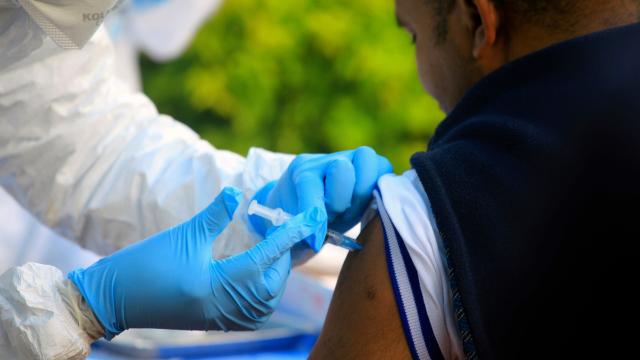The past five years have seen a surge in documented cases of the deadly and gruesome viral disease Ebola, thanks to widespread (and ongoing) outbreaks that have ripped through Africa and even made it to other areas of the world. But a new study out Thursday suggests these waves of misery and death are only the tip of the iceberg—at least half of all outbreaks in Ebola’s recognised 40-year history may have gone unnoticed.
Researchers at the University of Cambridge looked at data from the largest Ebola outbreak to have happened yet, which saw nearly 30,000 reported cases and 11,000 deaths between 2013 and 2014, mostly concentrated in West Africa. They were especially interested in how secondary infections during the outbreak spread beyond the initial case of an animal, usually a bat, transmitting the disease to a person. They used the data to create a model of expected cases that have happened since 1976, when the very first Ebola patients were reported. Then they compared the model to the actual documented toll of Ebola.
Based on this comparison, they estimated that about half of all spillover events—an instance of an animal infecting a person with Ebola, which then could have turned into a larger person-to-person outbreak—have gone unreported all this time.
“Although the total amount of evidence in this area is still limited, this study’s main result—that at least half of [Ebola] outbreaks go undetected—is consistent under many different sets of assumptions,” the authors wrote in their paper, published Thursday in PLOS Neglected Diseases.
Scary as that sounds, it’s worth putting in a larger context. Prior to the 2013 outbreak, most flare-ups of Ebola had been very small. And the missing cases are especially likely to be “dead-ends,” to quote the authors, because those would be easier for a doctor to never hear about and document. So even under the most generous assumptions used in the study, the hidden outbreaks might represent anywhere from 100 to 300 total cases over 43 years.
On the other hand, the authors said, there are factors that could dramatically increase the number of spillover events beyond what they projected. If some strains of Ebola in the wild over the years have been less infectious or sickening than usual, for instance, more people could have unknowingly carried the disease.
More than providing a precise estimate of Ebola cases, though, the study is meant to illustrate that we don’t have a good system in place to detect these outbreaks in general. And the more hidden outbreaks there are, the greater the odds that any one of them can erupt into something more monstrous and harder to fight.
“There is a clear need to improve outbreak detection and rapid response, and investment in these areas is among the most efficient ways of reducing” Ebola deaths, the authors wrote.
It’s a harsh lesson that’s timely. Just this past week, the World Health Organisation announced that the current Ebola outbreak in the Democratic Republic of Congo has now gone international, with at least three cases in the neighbouring country of Uganda. The outbreak, 10 months strong, is already the second-largest ever reported, with just over 2,000 confirmed or probable cases and nearly 1,400 deaths.
